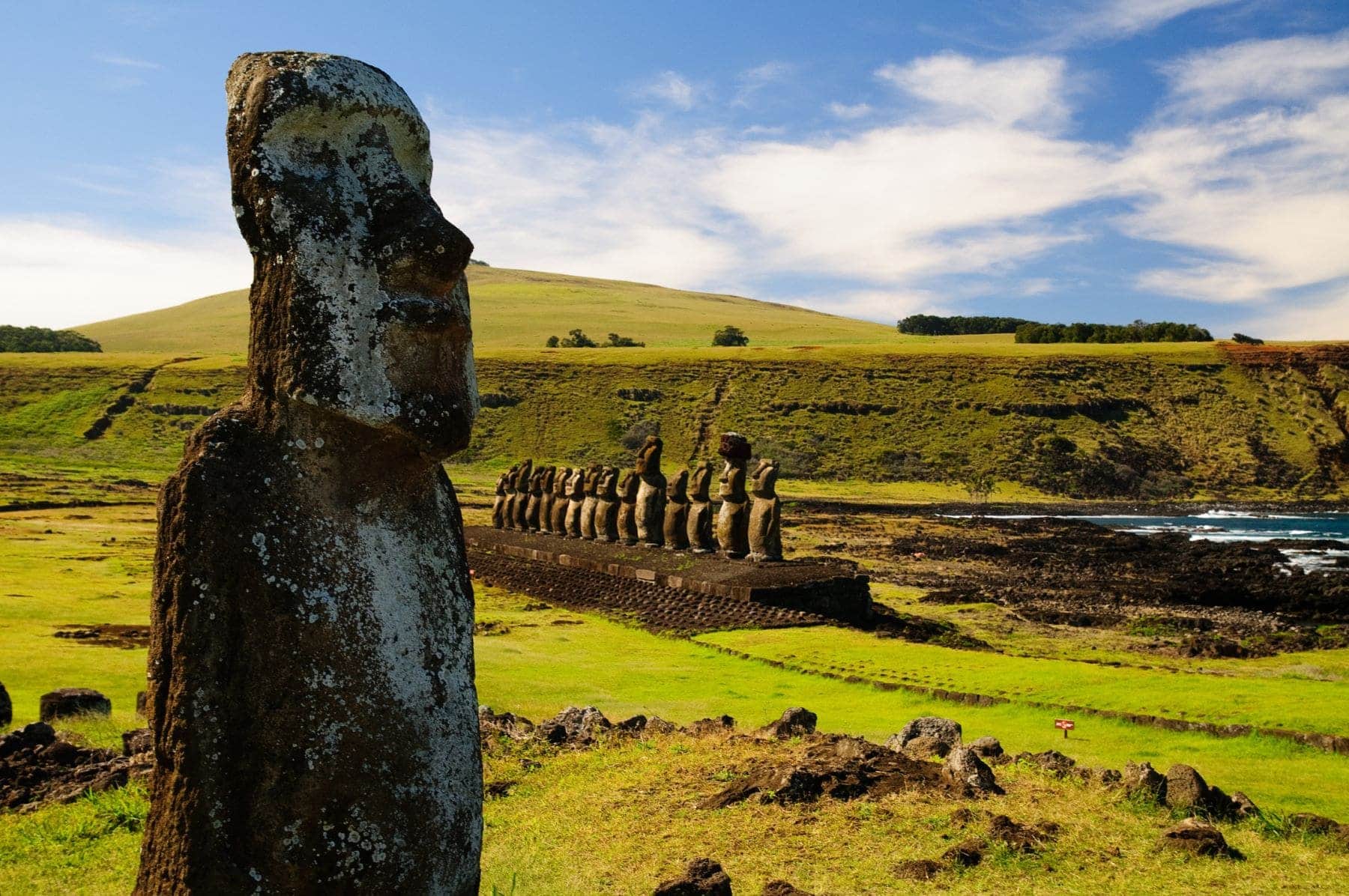The Tiny Easter Island (Chile) is the most remote inhabited place in the world and the headquarters of one of the greatest historical enigmas. Its geographical isolation is extraordinary, more than 2,000 kilometers from the closest inhabited point, which has allowed it to have a very peculiar and still quite unknown environmental and cultural history.
Undoubtedly, the discovery is no less surprising that the island famous for its huge statues or moais now upholstered by grass grasslands, It would have been covered with palm forests that disappeared suddenly, which produced a radical change in the ecological and cultural history of the island.
To top it off, its location in the South East of the Pacific Ocean and Mercy of several sea currents, it is deposited with millions of tons of plastic waste that every year they reach their coasts and contaminates them.
Recover and protect the ecosystem on Easter Island
He Chile Government recently launched a plan that integrates scientific knowledge and ancestral knowledge with the aim of protecting the marine ecosystem of Easter Island, One of the most affected on the planet for plastic pollution.
“This is a historical milestone, since we have reached an agreement for the protected areas of the island to manage their conservation in balance with the activities that the people of Easter Island ancestral”, Explained the Undersecretary of the Environment, Maximiliano Proaño, on the integrated management plan published Friday in the Official Gazette.
The initiative, elaborated next to the Rapa Nui Community (Easter Island), indigenous name with which this island is known in the middle of the Pacific Oceanseeks to restore and maintain the healthy marine area of Latin America.
In addition, it is proposed to promote the sustainable use of resources, Promote environmental education and strengthen the sovereignty of the marine territory of the people of Easter Island, located 3,700 kilometers from the Chilean coasts.
“It was very important for us Approve the Integrated Management Plan of the Protected Marine Areas of Easter Island. I am happy, happy to be able to have him and I hope to show it to the entire community now that it is already formalized, ”celebrated the leader of the Community Governance Body Mesa del Mar, Koro Felipe Nahoe.
With an area of 870,000 square kilometers that cover the exclusive ancestral use zone for the Rapanui people and the remote oceanic area of the Motiro Hiva National Park, the protected waters of Easter Island house great natural, economic and cultural value.
Among the species that give it its high endemism (distribution of a species limited to a reduced geographical area) are yellow fin tuna, kana-kana fish, sea turtles, sharks, cetaceans and deep water corals, varieties that represent a spiritual and subsistence pillar for the island community, but are currently threatened.
The serious problem of plastic pollution
One of the main Challenges facing the marine environment of the Easter Island is pollution, since 4.4 million garbage objects reach its coastaccording to a study by the Catholic University of the North, generated by riverside countries in America and Asia.
Given this situation, the integrated management plan proposes measures such as the regulation of tourism and the establishment of vessel limits or fishing regulation, in addition to Biodiversity monitoring, the protection of emblematic and threatened species, and the control and eradication of invasive species.
On the other hand, it will develop environmental education and cultural transmission activities, will encourage research, both scientific and ancestral, It will rescue and apply traditional cultural practices more respectful of the marine ecosystem and promote community inspection.
This program is approved after seven years of joint work among more than twenty institutions, universities and local and state organizations that began in 2018 with a first Diagnosis and collection of biocultural information, continued with technical work and consultations to the Rapanui people, and culminated this Friday with their official presentation.
“Now, the great challenge is that this plan is implemented, to make the necessary protection of these protected marine areas more and more”, Concluded the Undersecretary of the Environment. EFE / ECOticias.com

